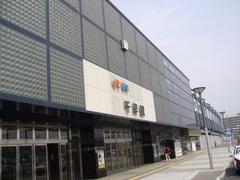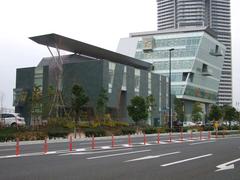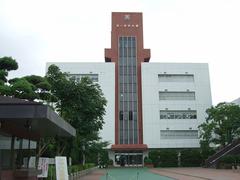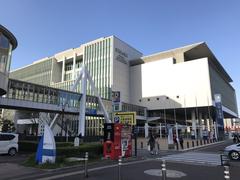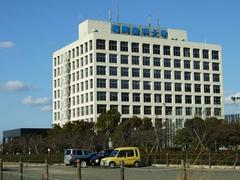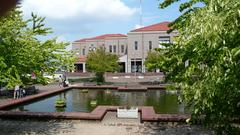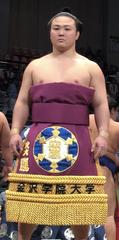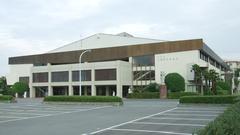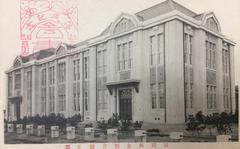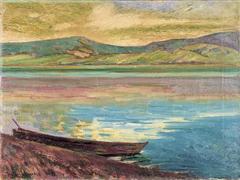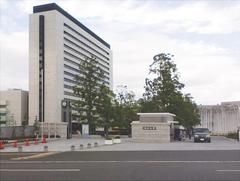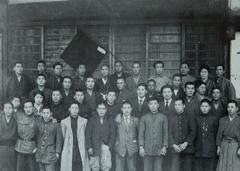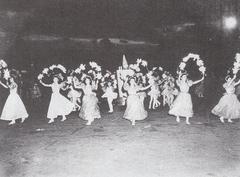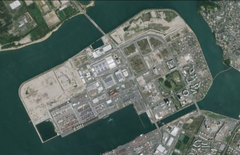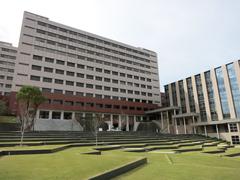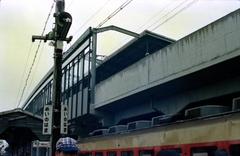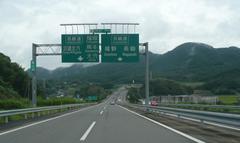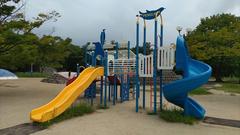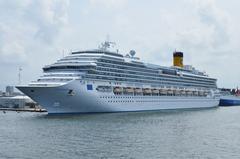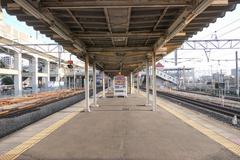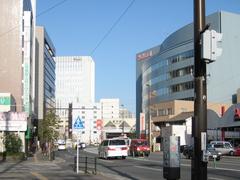Higashihama Fukuoka: Visiting Hours, Tickets, and Tourist Guide
Date: 04/07/2025
Introduction to Higashihama and Fukuoka’s Historical Coast
Higashihama, nestled along Fukuoka’s scenic northeastern coastline, is a destination where natural beauty meets rich cultural heritage. As part of Fukuoka’s historical landscape, this area has served as a crucial maritime gateway since the Yayoi period (c. 300 BCE–300 CE), fostering centuries of trade and cultural exchange with the Asian mainland. Today, Higashihama welcomes visitors to its tranquil beaches, preserved feudal relics, and vibrant neighborhoods that together embody the spirit of Fukuoka (Fukuoka Tourism History, Hidden Historical Sites in Fukuoka).
Whether you’re a history buff, nature lover, or culinary enthusiast, this comprehensive guide covers everything you need to plan your visit—detailed visiting hours, ticketing information, accessibility tips, and recommendations for local attractions and experiences (Things to Do in Fukuoka, The Crazy Tourist).
Table of Contents
- Historical Foundations and Ancient Roots
- Feudal Heritage and Coastal Defense
- Modernization and Urban Culture
- Festivals and Living Traditions
- Traditional Crafts and Culinary Heritage
- Key Sites: Hours, Tickets, and Access
- Travel and Accessibility Tips
- Nearby Attractions & Day Trips
- FAQ
- Conclusion and Further Resources
Historical Foundations and Ancient Roots
Fukuoka’s northern shore has been a cultural and commercial crossroads for over two millennia. Archaeological discoveries at sites like the Itazuke Ruins reveal early rice cultivation and thriving trade, laying the foundation for the area’s prosperity (gofukuoka.jp). Higashihama, as part of this coastline, historically provided not only sustenance and trade opportunities but also served as a frontline in Japan’s defense.
The region’s strategic position facilitated early connections with China and Korea, making Fukuoka and its coastal settlements a hub of international exchange (Fukuoka Tourism History, realestate-fukuoka.yes-fudousan.com).
Feudal Heritage and Coastal Defense
During the feudal era, the Kuroda clan established Fukuoka Castle, transforming the region into a military and administrative stronghold (Hidden Historical Sites in Fukuoka). The Mongol invasions of the 13th century left a lasting mark—remnants of the Genko Borui, a defensive stone wall built against the Mongol fleets, still stand along the coastline (World Marketing Diary). These sites, including the castle ruins and defense walls, are accessible for visitors today.
Modernization and Urban Culture
The Meiji Restoration and subsequent urban development fused the traditions of Hakata’s merchants and Fukuoka’s samurai. Today, Higashihama is easily accessible and blends historical charm with contemporary amenities. Fukuoka has evolved into a modern, lively city, yet continues to honor its past through urban preservation and community initiatives (Fukuoka Tourism History, Things to Do in Fukuoka).
Festivals and Living Traditions
Hakata Gion Yamakasa
Held every July, Hakata Gion Yamakasa is one of Fukuoka’s most iconic festivals, with roots in Buddhist purification rituals and now blending Shinto practices. The festival features teams racing with massive floats and is recognized as an Important Intangible Folk Cultural Property (welcome-fukuoka.or.jp, japan-food.guide).
Other Major Festivals
- Hakata Dontaku Port Festival (May): Parades and performances draw millions (fun-japan.jp).
- Hojoya Festival (September): A Buddhist event at Hakozaki Shrine celebrating nature and spirits (gofukuoka.jp).
Participation in these festivals is free, though special viewing areas may require advance tickets.
Traditional Crafts and Culinary Heritage
Fukuoka and Higashihama are renowned for traditional crafts like Koishiwara pottery and Yame Fukushima Buddhist altars, which can be explored at the Hakata Traditional Craft and Design Museum (local-t.com, gofukuoka.jp).
Culinary highlights include Hakata ramen, mentaiko (spicy cod roe), and fresh seafood served at yatai (street food stalls)—a beloved aspect of local lifestyle (visitinsidejapan.com).
Key Sites: Hours, Tickets, and Access
Higashihama Beach
- Open: Year-round, 24/7
- Lifeguards: Late May to early September, 9:00 AM–5:00 PM
- Fee: Free
Fukuoka Castle Ruins (Maizuru Park)
- Open: Daily, 9:00 AM–5:00 PM
- Fee: Free
Genko Borui Stone Wall
- Access: Open anytime, no ticket required
Yanagawa Canals
- Boat Tours: 9:00 AM–4:30 PM
- Ticket: ~¥1,400, available at the dock or online
Uminonakamichi Seaside Park
- Hours: 9:30 AM–5:30 PM (Mar–Oct), 9:30 AM–5:00 PM (Nov–Feb)
- Closed: Mondays (or next day if Monday is a holiday)
- Ticket: Adults ¥450, High school ¥250, Children free (Travels with Elle)
Marine World Uminonakamichi
- Hours: 9:30 AM–5:30 PM (last entry 5:00 PM), closed Tuesdays
- Ticket: Adults ¥2,350, High school ¥1,200, Children (4–12) ¥1,100
Additional Sites
- Nokonoshima Island: Ferry every 30 minutes; park open 9:00 AM–5:00 PM, ticket required
- Shikanoshima Island: Sites open year-round, free
- Hakozaki Shrine: 6:00 AM–7:00 PM, free
Travel and Accessibility Tips
- Getting There: Use JR lines or Nishitetsu buses from Hakata Station. Ferries connect to Nokonoshima and Shikanoshima Islands (Japan Travel).
- Parking: Limited near the beach; arrive early during weekends/summer.
- Accessibility: Major attractions offer wheelchair access and accessible restrooms; some historic sites may have uneven terrain.
- Best Time to Visit: Spring and autumn for flowers and mild weather; summer for beach activities.
- Visitor Passes: Fukuoka Tourist City Pass provides unlimited rides on public transport for one day (Fukuoka Now).
- Cash & Payments: Many smaller vendors are cash-only; bring sufficient yen.
Nearby Attractions & Day Trips
- Fukuoka Castle Ruins & Maizuru Park: Cherry blossoms in spring (Hidden Historical Sites in Fukuoka)
- Hakata Old Town: Historic temples and shrines (Fukuoka Heritage Week)
- Uminonakamichi Seaside Park: Flower gardens, cycling, events (Travels with Elle)
- Marine World: Aquatic exhibits and dolphin shows
- Dazaifu: Historic shrines and temples, easily reached by train
- Itoshima: Beautiful beaches and coastal cafés
FAQ
Q: What are the visiting hours for Higashihama Beach?
A: Open all day, year-round; lifeguard services from 9:00 AM–5:00 PM in summer.
Q: Are there entrance fees for the beach or main historical sites?
A: Higashihama Beach, Fukuoka Castle Ruins, and most shrines are free; some attractions like Marine World and boat tours require tickets.
Q: Is the area family-friendly?
A: Yes; beaches, parks, and festivals cater to families.
Q: How accessible are the main attractions?
A: Most offer wheelchair access and English signage.
Q: Where can I buy tickets for major attractions?
A: Tickets are available at site entrances, official websites, or local visitor centers.
Q: Are pets allowed on the beach?
A: Pets are permitted but must be leashed and cleaned up after.
Q: Is English widely spoken?
A: English signage is common at major sites; basic Japanese phrases are appreciated.
Conclusion and Further Resources
Higashihama and the greater Fukuoka area offer a harmonious blend of history, culture, and natural beauty. With free access to many sites, a robust public transport network, and a wealth of family-friendly activities, it’s the perfect destination for travelers seeking both relaxation and discovery. Plan your visit around seasonal festivals for a deeper cultural experience, and don’t miss exploring nearby islands and parks.
For more detailed planning, virtual tours, and real-time updates, download the Audiala app and visit these official sources:
- Fukuoka Tourism History
- Hidden Historical Sites in Fukuoka
- World Marketing Diary
- Things to Do in Fukuoka
- GoFukuoka
- Welcome Fukuoka
- Travels with Elle
- Hey Roseanne
- The Crazy Tourist
For further reading and up-to-date tips, explore: Tokyo Weekender, Fun Japan, and official tourism portals.
